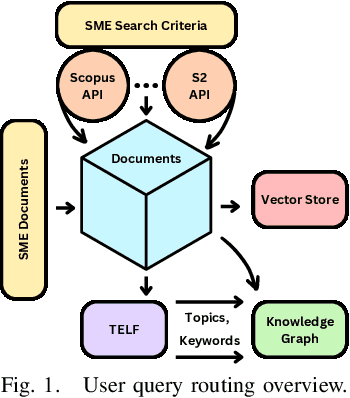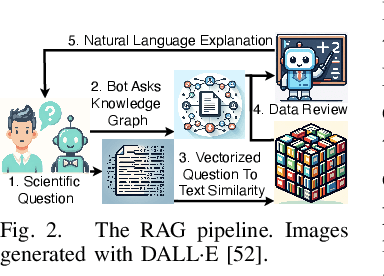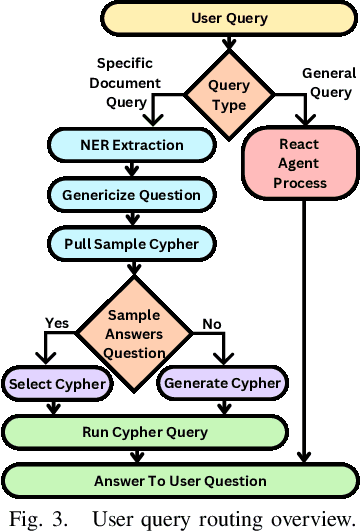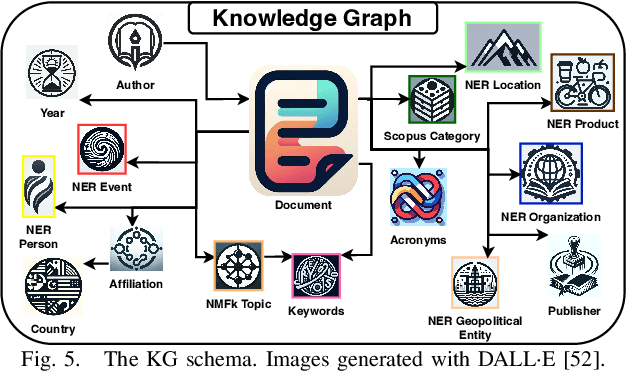Ryan C. Barron
Bridging Legal Knowledge and AI: Retrieval-Augmented Generation with Vector Stores, Knowledge Graphs, and Hierarchical Non-negative Matrix Factorization
Feb 27, 2025Abstract:Agentic Generative AI, powered by Large Language Models (LLMs) with Retrieval-Augmented Generation (RAG), Knowledge Graphs (KGs), and Vector Stores (VSs), represents a transformative technology applicable to specialized domains such as legal systems, research, recommender systems, cybersecurity, and global security, including proliferation research. This technology excels at inferring relationships within vast unstructured or semi-structured datasets. The legal domain here comprises complex data characterized by extensive, interrelated, and semi-structured knowledge systems with complex relations. It comprises constitutions, statutes, regulations, and case law. Extracting insights and navigating the intricate networks of legal documents and their relations is crucial for effective legal research. Here, we introduce a generative AI system that integrates RAG, VS, and KG, constructed via Non-Negative Matrix Factorization (NMF), to enhance legal information retrieval and AI reasoning and minimize hallucinations. In the legal system, these technologies empower AI agents to identify and analyze complex connections among cases, statutes, and legal precedents, uncovering hidden relationships and predicting legal trends-challenging tasks that are essential for ensuring justice and improving operational efficiency. Our system employs web scraping techniques to systematically collect legal texts, such as statutes, constitutional provisions, and case law, from publicly accessible platforms like Justia. It bridges the gap between traditional keyword-based searches and contextual understanding by leveraging advanced semantic representations, hierarchical relationships, and latent topic discovery. This framework supports legal document clustering, summarization, and cross-referencing, for scalable, interpretable, and accurate retrieval for semi-structured data while advancing computational law and AI.
Domain-Specific Retrieval-Augmented Generation Using Vector Stores, Knowledge Graphs, and Tensor Factorization
Oct 03, 2024



Abstract:Large Language Models (LLMs) are pre-trained on large-scale corpora and excel in numerous general natural language processing (NLP) tasks, such as question answering (QA). Despite their advanced language capabilities, when it comes to domain-specific and knowledge-intensive tasks, LLMs suffer from hallucinations, knowledge cut-offs, and lack of knowledge attributions. Additionally, fine tuning LLMs' intrinsic knowledge to highly specific domains is an expensive and time consuming process. The retrieval-augmented generation (RAG) process has recently emerged as a method capable of optimization of LLM responses, by referencing them to a predetermined ontology. It was shown that using a Knowledge Graph (KG) ontology for RAG improves the QA accuracy, by taking into account relevant sub-graphs that preserve the information in a structured manner. In this paper, we introduce SMART-SLIC, a highly domain-specific LLM framework, that integrates RAG with KG and a vector store (VS) that store factual domain specific information. Importantly, to avoid hallucinations in the KG, we build these highly domain-specific KGs and VSs without the use of LLMs, but via NLP, data mining, and nonnegative tensor factorization with automatic model selection. Pairing our RAG with a domain-specific: (i) KG (containing structured information), and (ii) VS (containing unstructured information) enables the development of domain-specific chat-bots that attribute the source of information, mitigate hallucinations, lessen the need for fine-tuning, and excel in highly domain-specific question answering tasks. We pair SMART-SLIC with chain-of-thought prompting agents. The framework is designed to be generalizable to adapt to any specific or specialized domain. In this paper, we demonstrate the question answering capabilities of our framework on a corpus of scientific publications on malware analysis and anomaly detection.
 Add to Chrome
Add to Chrome Add to Firefox
Add to Firefox Add to Edge
Add to Edge